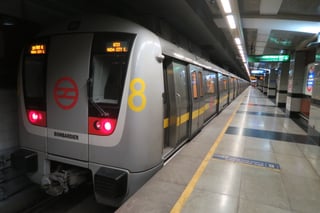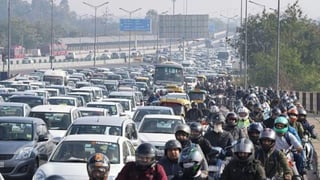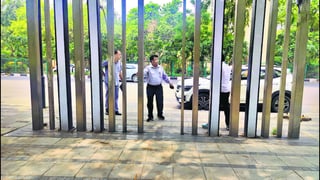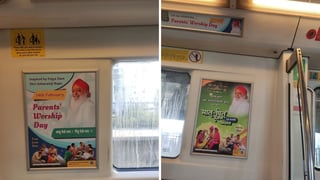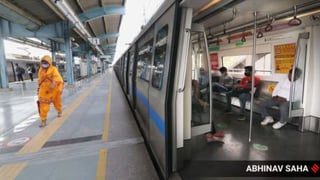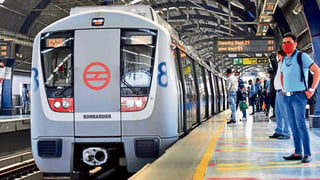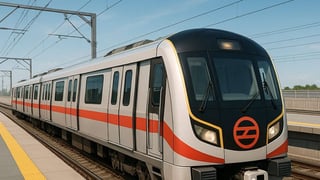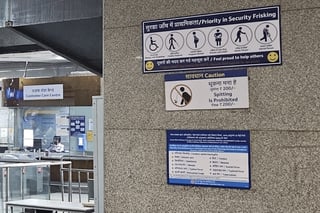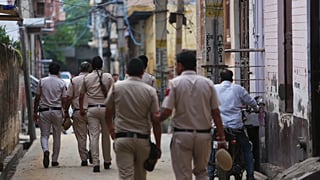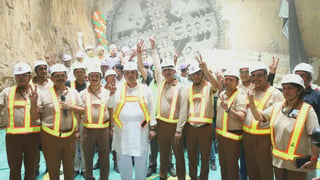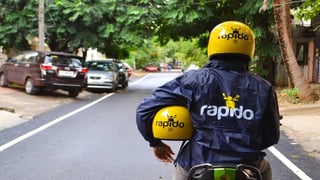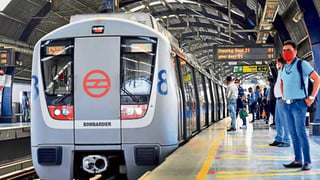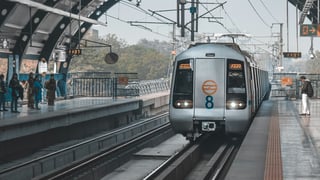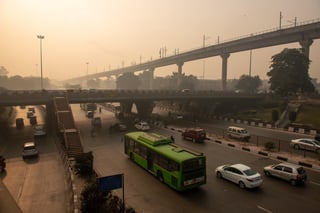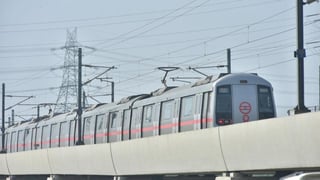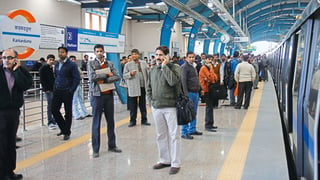The Delhi Metro is a mass rapid transit (MRT) system serving Delhi and its satellite cities of Ghaziabad, Faridabad, Gurgaon, Noida and Bahadurgarh, in the National Capital Region of India. The network consists of 10 colour-coded lines serving 255 stations with a total length of 348.12 kilometres (216.31 mi). It is by far the largest and busiest metro rail system in India, and the second oldest after the Kolkata Metro. The system has a mix of underground, at-grade, and elevated stations using both broad-gauge and standard-gauge. Delhi Metro operates over 2,700 trips daily, starting at around 05:30 and ending at 23:30. Construction started in 1998, and the first elevated section (Shahdara to Tis Hazari) on the Red Line opened on 25 December 2002. The first underground section (Vishwa Vidyalaya – Kashmere Gate) on the Yellow Line opened on 20 December 2004. The development of the network was divided into phases. Phase I with 3 lines was completed by 2006, and Phase II in 2011. Phase III is in the finishing stage and is scheduled to be complete by end of 2022. Construction under Phase IV was formally started on 30 December 2019. Delhi Metro Rail Corporation Limited (DMRC), a company with equal equity participation from the Government of India and the Government of Delhi, built and operates the Delhi Metro. DMRC was certified by the United Nations in 2011 as the first metro rail and rail-based system in the world to get carbon credits for reducing greenhouse gas emissions, reducing carbon emission levels in the city by 630,000 tonnes every year. The Delhi Metro also has interchanges with the Rapid Metro Gurgaon (with a shared ticketing system) and Noida Metro. On 22 October 2019, DMRC took over the operations of the financially troubled Rapid Metro Gurgaon. Annual ridership of Delhi metro was 1.79 billion in 2019. From Wikipedia
